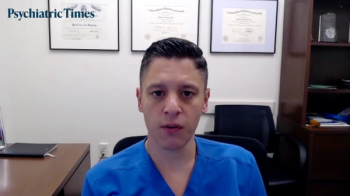
Tumbling Into Telepsychiatry in the COVID-19 Era: Challenges and Hope
The are many elements to consider during this massive migration to telepsychiatry. Nonverbal, physical, and socioeconomic factors are all significant considerations of the shift in frame.
The first forms of telepsychiatry were initiated as videoconferencing in the 1950s. Its use has steadily increased in recent decades. Due to the
A rapid shift in the frame
In previous decades, the initiation of
One way to consider the move from seeing patients in offices, to seeing them from home through computers, is a shift in the frame.
There are many benefits to this shift in frame with virtual encounters: the main one, of course, is that many are continuing to receive mental health treatment, because clinicians were able to make this change quickly. Telehealth can provide international training, supervision, and treatment, and allows for continuing relationships with patients who relocated, or who are working or training remotely.
Virtual platforms provide HIPAA-compliant chat functions and allow informal discussion of patients between colleagues; providing much needed connection and interaction. Research supports the efficacy of virtual care in maintaining therapeutic rapport and fulfilling patients’ needs. It also demonstrates that remote supervision was experienced as equally effective to in-person supervision. However, the way clinicians conduct their visits is a finely honed technique that takes years to develop. You might change the way you ask questions, the way you sit, or focus on certain mannerisms during a session. These details are all but lost in virtual encounters and most programs lack specific training on connecting through virtual platforms (Figure 1).
Non-verbal elements
In the past, it was felt by many that virtual mental health care was impossible. Treatment outside the office was deemed insufficient; even with video, nonverbal and subtle sensory experiences that the clinician and the patient take in about one another would be missed. Even now, clinicians feel they may miss subtle extrapyramidal findings or environmental cues when looking at a screen. The calm of the clinician or the simmering agitation of a psychotic patient may not be communicated the same way through video. It is easier to immerse oneself in the experience in the room with a patient and have a greater sensory awareness of the interaction.
Much of psychoanalytic literature discusses treatment in the room with the patient. Kernberg spoke to the use of structure and a frame to help patients struggling with a fragmented sense of self and difficulties with emotion regulation.1 The physical presence of the clinician is a part of that structure. The clinician’s presence can demonstrate a commitment to be in the life of a patient. Over time, a patient can develop and internalize consistency and structure into his or her sense of self by utilizing the experience in the room.
McWilliams discusses the need for both stimulating and comforting elements when working with patients.1 Comfort provides a sense of safety and stimulation is used to introduce challenge and complexity so that the patient can grow. The flexibility of providing a variety of comforting and stimulation interventions is shifted in telepsychiatry. As such, the interventions that the clinician provides may have to be amplified in other ways—just as an un-amplified actor on the stage emotes louder than a Hollywood actor.
Elements of the work in the room that convey meaning, such as silence, may be experienced quite differently in a virtual encounter. In the room, a silence can represent a shared moment of understanding, or an acceptance of patients as they are. During a tele-session, silence can be experienced as abandonment, an absence, distraction by the clinician, or even connection issues.
In the office, patients and clinicians have the privilege of a great deal of privacy. The clinician provides a private, neutral space uninhabited by family members or significant others. This level of privacy is now something patients need to create on their own, by finding their own space to meet. Also, most clinicians have a waiting room, a transitional space patients can use as a bridge between their personal lives and their relationship with their clinician. This transitional space is no longer present and can be jarring to patients. Furthermore, literal privacy is also at risk—tele-sessions introduce vectors for security breaches in a way that is different from the safety experienced in clinicians’ offices.
Just as the distance may affect patients in different ways, it can also affect clinicians in various ways. The distance of the treatment may provide a separateness to help contain their own anxiety. It can help the clinician maintain boundaries of feeling undue pressure to do more than they are able, in the session. The distance may also intensify the loneliness and separation the clinician is experiencing in the work (Figure 2).
Physical elements
Setting up a telepsychiatry environment in the current COVID-19 situation involves the basics of a private space with a desk, communication device, reliable internet, and a comfortable chair. Challenges include eliminating background noise and distractions such as interruptions from pets and family members. The goal is to create an environment that feels safe, inviting, and personal, but also allows privacy for both the psychiatrist and the patient. A safe, private, and quiet environment is essential for the patient to benefit fully from the interaction.
Once these elements are met, another struggle is the ability to maintain eye contact and proper attention while completing other necessary tasks such as note-taking or writing prescriptions. Unlike an on-site session with a patient who fully maintains his attention, there are many more distractions available to clinicians that may make it harder to focus. Emails can pop on-screen, messages ding, and cats slink by the camera. It is important for clinicians to establish with the patient, that they may need to type while talking, or that they may shift their gaze to view the patients’ records. Each eye movement made can be more closely scrutinized by the patient. Keeping patients aware of what might be going on allows clinicians to collaborate more and prevents patients from feeling ignored.
Clinicians may also experience fatigue after a long day of seeing patients through telepsychiatry. This fatigue can stem from energy expended to focus on, and be more active with, patients. Clinicians might feel limited in their ability to move in their lives and communities. These constrictions, as well as the effort of simultaneously providing containment of their own anxiety (and that of their patients) can lead to a sense of burden and weight. The clinician may be pressured to provide certainty during such an uncertain time. This can be a weighty burden for the clinician to bear and contribute to fatigue.
Socio-economic elements
Telepsychiatry has highlighted existing health care and socioeconomic disparities. Tele-visits are far more utilized among patients in urban settings rather than those in rural communities, due partly to less reliable technologies such as fast internet access. The lack of an emotionally safe and private space for a tele-psychiatric visit is a major issue for the underserved. When patients cannot access mental health care on a regular basis, they are more likely to wait until symptoms are more severe and present to emergent care.
Tele-visits can be a great relief to those who do have difficulty accessing transportation. Those with financial and mobility issues may have an easier time initiating a session from home. Clinicians may learn more about the conditions and relationships in the home, recognize more of what the sanctity of the office provides to the patient. The socio-economic disparity may add a layer to the frame, by forcing into clearer view the economic hardship patients experience.
Clinical applications
From a diagnostic perspective, certain patients may derive greater therapeutic benefit from telepsychiatry, and this area needs to be investigated further in a rigorously scientific manner. For instance, those who have social anxiety disorder or agoraphobia may initially feel more comfortable avoiding direct interaction by using telepsychiatry. However, it may impair their functioning long-term by reinforcing avoidant patterns.
A patient who is aggressive, psychotic, or one who is experiencing significant cognitive decline may be too inattentive or agitated to focus on the camera for a sustained period. It might be hard to get a full clinical picture of someone with schizophrenia if he or she is responding to internal stimuli. However, it might be easier to have a tele-session with paranoid patients if they do not want to come into the office. Patients with borderline personality disorder may feel abandoned by the switch to tele-visits. Conversely, some patients with histories of trauma, feeling unsafe, or feeling criticized by others may find it easier to speak with the distance of tele-visits.
From a physical perspective, both parties will break a barrier that existed before, between personal and professional. For example, the patient sees the clinician’s home in the video feed, or the clinician sees family members or pets whose existence was formerly abstract. This is not new, however; Freud, for example, frequently saw patients in his home in London. The new information gathered may intensify the treatment in new ways and provide different insights and understanding. Perhaps this is simply establishing a different level of intimacy (desired or otherwise) between the patient and clinician.
Summary
The are many elements to consider during this massive migration to telepsychiatry. Nonverbal, physical, and socioeconomic factors are all significant considerations of the shift in frame. These factors, combined with the clinical applications of telepsychiatry, affect the experience of the interaction between the patient and the clinician and bring up a range of feelings in both the clinician and patient. For clinicians, being able to address these changes and experience the related feelings fully, can allow them to apply telepsychiatry better. As many more clinicians are becoming more comfortable with this method, more relationships with patients can be forged, maintained, and renewed.
Dr Ashraf is Assistant Professor of Psychiatry at the Menninger Clinic, Menninger Department of Psychiatry and Behavioral Sciences, Baylor College of Medicine, Houston, TX; Dr Shenoi is PGY-1 Resident, Department of Psychiatry and Behavioral Sciences, Baylor College of Medicine; Dr Moukaddam is Associate Professor, Menninger Department of Psychiatry & Behavioral Sciences, Baylor College of Medicine and Ben Taub Adult Outpatient Services Director, Medical Director, Stabilization, Treatment & Rehabilitation (STAR) Program for Psychosis.
Reference
Kernberg OF.
Newsletter
Receive trusted psychiatric news, expert analysis, and clinical insights — subscribe today to support your practice and your patients.













